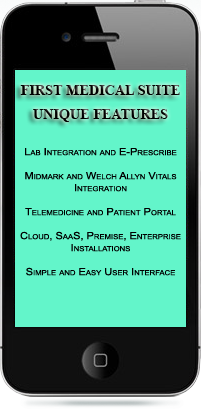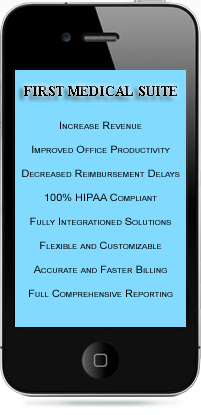E-Prescribe and E-RX
How To Use E-Prescribe in First Medical Suite


E-Prescribe allows a Doctor to write Prescriptions for Medications directly using the EMR. This script writing function is done electronically and greatly increases accuracy and shortens the time it takes for a Patient to pick up their medicines.
You can access the E-Prescribe feature in First Medical Suite simply by clicking on large and easy-to-navigate buttons and tabs within encounter screens in the EMR software. Medications can be historically documented in the Patient's chart under the Subjective Tab and under Medication. At the time of the encounter, where the doctor determines what medications to prescribe, a Physician clicks the Prescription link in the Tab Bar on the left side of the software. A NewCrop E-Prescribe window screen will then appear. NewCrop is the trusted ERX provider used industry-wide and makes it easy to write scripts and even research medications for Formulary verification, as well as any drug interactions.

With the E-Prescribe Feature you can:
Check and Verify Insurance before you prescribe the Medication
Get Alternatives if a drug is not approved by the Patient's insurance
Provide substitutions and Generic Options
Research Drugs by name
Read Detailed Drug warnings, use and other important information
Read Warnings for over dosing as well as under dosing
Get Drug Interaction warnings based on Patient's Drug History
First Medical Suite records a full Medication history
Record and Document all medications a Patient has
Detailed Tables and Lists of all Prescriptions the Doctor has written for any patient
Pop Up windows and Warnings alerting the Physician of Allergic reactions
Pop Up windows to warn of Drug Interactions
Printable Patient Education Materials
Printable Drug and Manufacturer Descriptions and FDA Warnings and Usage
All local and major pharmacies now use E-Prescibe which means that almost any Patient can use almost any pharmacy to get the medications they need. First Medical Suite makes it easy to order Medications and Drugs with one mouse click. The EMR sends the script directly to the Patient's pharmacy of choice as listed in the Patient demographics screen. The EMR also makes it easy to add or change pharmacies if a Patient moves or uses a new Pharmacy choice. The script is sent and the Pharmacy fills the order. The patient can pick up their Meds on their way home from the Practice. All with a few mouse clicks.
Here are the Screens in First Medical Suite and how they are used in the EMR:
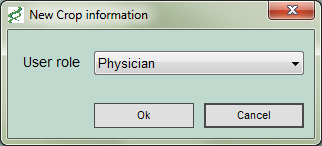
While in the Encounter - Select Prescription
Each User has a role and certain permissions associated with that role. No one except the Physicians and those Practitioners with licensure can prescribe medications or write scripts in the EMR. So the EMR will display a box challenging a users ability to write a script. First Medical Suite also has built in timeout timers that log off users when the software is unattended or left idle. This insures a tight security and denies any entry in the EMR and certainly the Prescription area of the application.
The Compose RX Screen - Here you search for Drugs and Medications by name and determine any allergy and Intolerances.
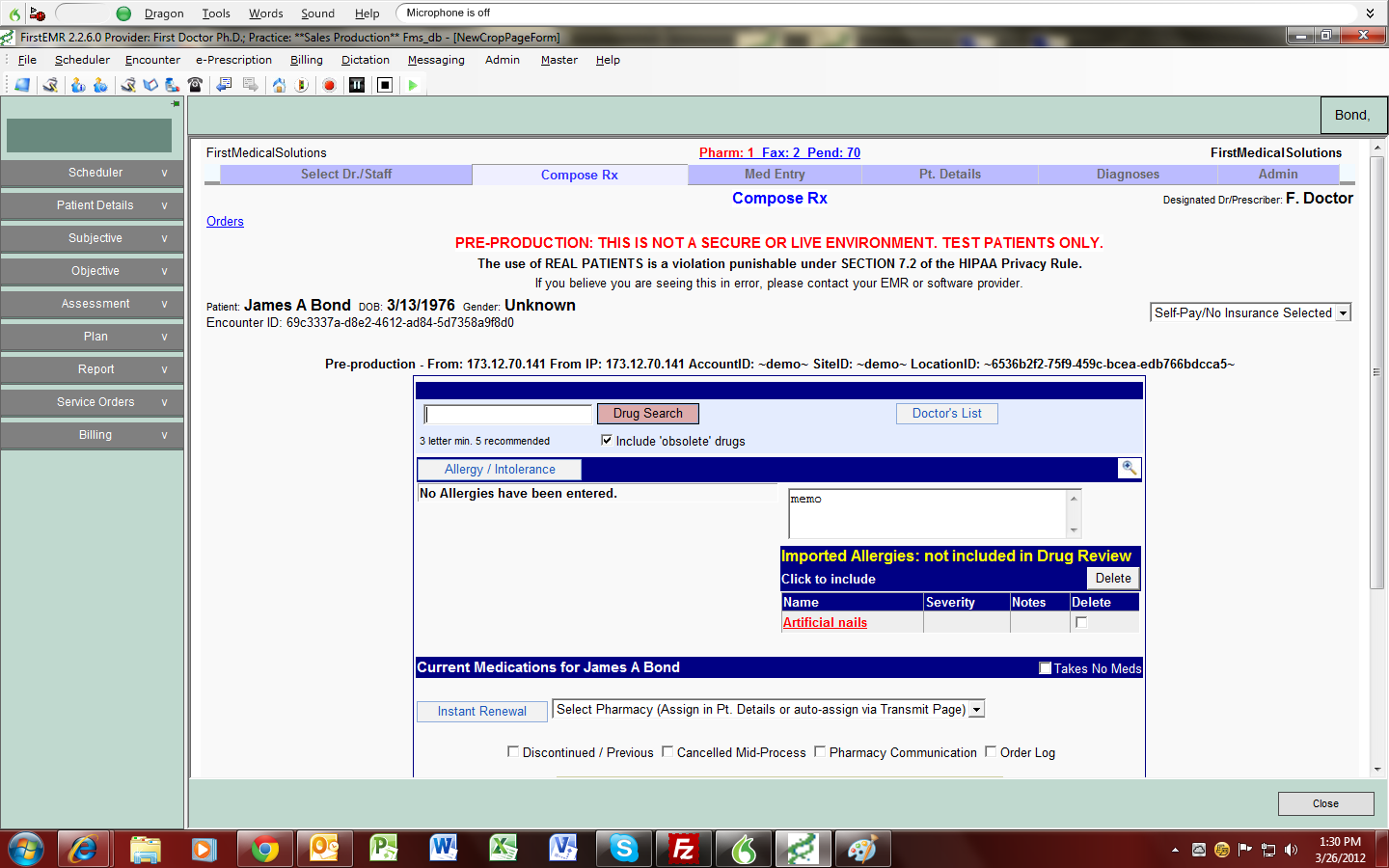
The preferred Pharmacy can also be selected easily using drop down boxes and lists. Allergies are automatically imported. Renewals are simple and done with one button click. First edical Suite helps you do your job as a Doctor quickly, securely and accurately.
Drug Search Results with Information Leaflets
Type in the Medication and click the Drug Search button. Instantly, you will have the brands, dosage and type of Medications that are available. Hot links allow you to select the Drug you want and the application allows you to add that choices or choices to the Patient's Prescription list. All selections are compared against the Formulary and Insurance records for that Patient. If a drug is not covered, the EMR will allow you to select and offer alternatives.
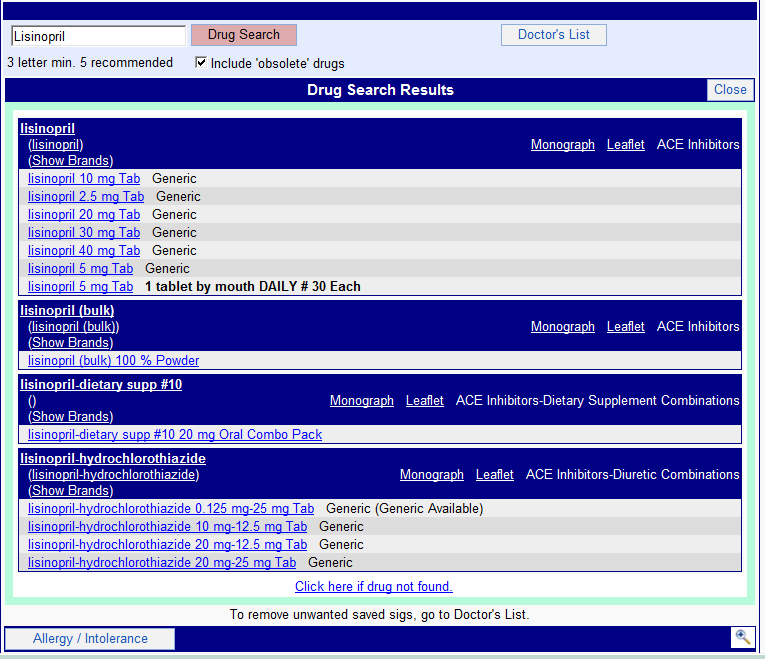
Get all the Information that you need about any drug. After you make your selections, save them for future use by clicking the save RX button. Save the Drug name, the details about the prescription and other choices specific to that patient. The Medication will be saved in the Patient chart in the Medication History.
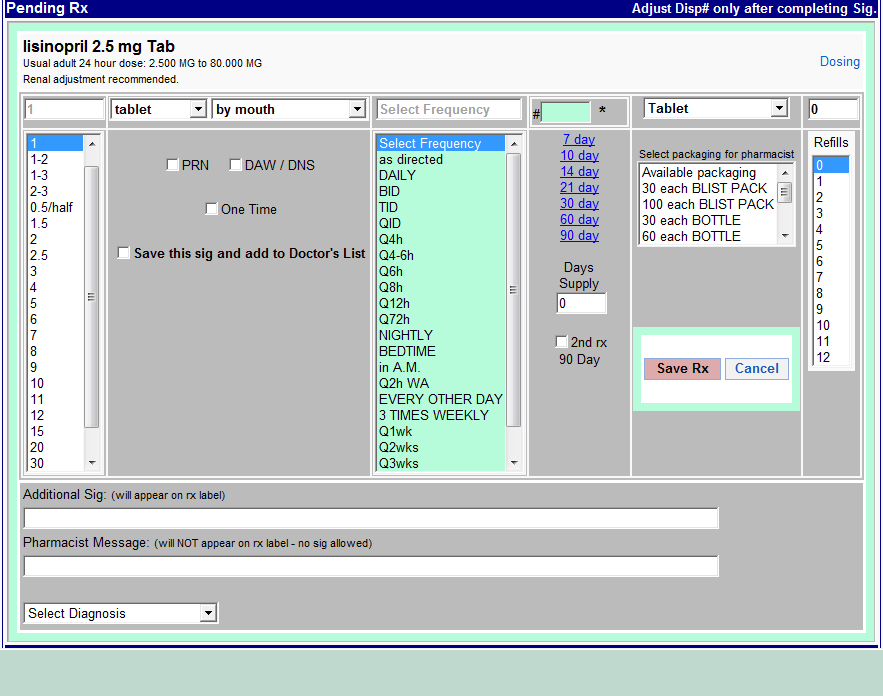
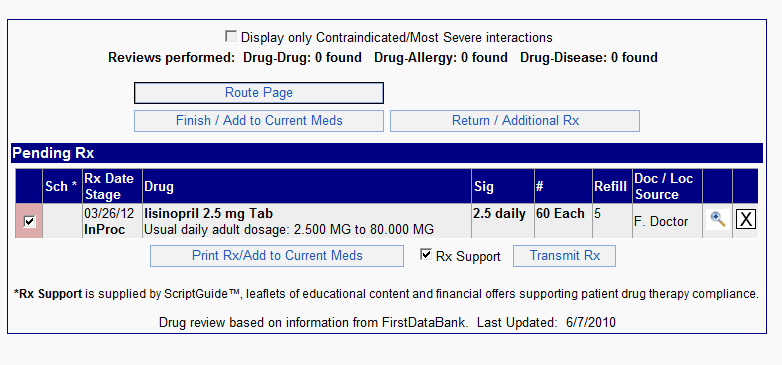
Print your Script or electronically Transmit the Prescription with a single button click. You can also add additional Meds to the Patient's Prescription. The EMR will fax the script to the Pharmacy of choice. Simple and easy to navigate with clear screens and boxes. See and review all selections and choices prior to transmitting the order.
NewCrop E-Prescribe Information and Videos
Below you will find additional information from NewCrop in regard to their ERX interface. Also see their instructional video series on YouTube for more help on using this powerful Prescription creation tool.
http://www.youtube.com/playlist?list=PLC2E55B597A88C7F9&feature=viewall
|



